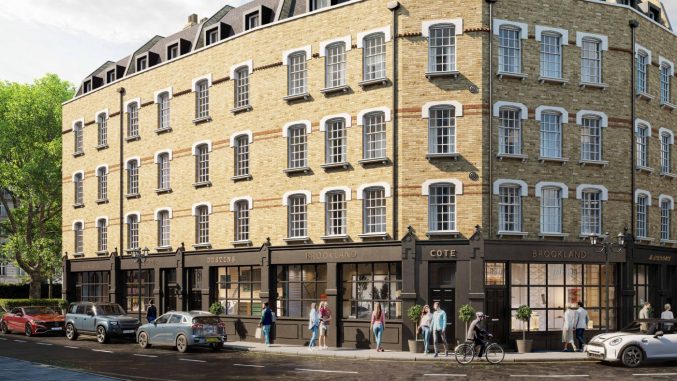The problem with paying White British men more than everyone else
By Hannah Duncan

Property finance straddles two archaic worlds; construction and finance – the two worst sectors for the gender pay gap. Women earn an eye-popping 38%[1] less for doing the same work as men in construction, and an eye-rolling 30% less in finance[2]. In real terms, this means that if a man earns a salary of £50,000 a year, his female co-worker will earn just £35,000 in financial services or £31,000 in the construction industry. What’s more, it’s not just women who are getting the short end of the paycheque. Black graduates and those from minority backgrounds earn 23%[3] less than their White British counterparts in construction too.
So, what the hell is going on? Why are these two industries so incredibly sexist and racist? Well, it turns out that while they have the same frustrating issues, finance and construction are at very different stages in fixing them.
Finance needs to promote
The problem, in finance, is not for a lack of applicants or talent. Far from it! Women make up nearly half – 45%[4] – of the financial services’ workforce, after all. When it comes to holding a degree in finance or economics, Asian and Indian graduates are over-represented. And there’s no evidence that being a middle-aged man called Dave with a combover makes you any cleverer or better at doing your job than the rest of us.
So, it’s not the mix of people that’s the problem. According to the ONS figures[5], Banking and Finance has a strong representation of non-White, non-British men. Refreshingly, there’s even a higher proportion of Asian and Indian employees in finance compared to all the other groups.
The problem is that all these valuable and much-needed people are stuck in the wrong place. Finance employees who are not White British men need to be at the top, making decisions and balancing out the power distribution. But instead, they’re doing the rubbish donkey work at the bottom, consistently being overlooked for pay rises and promotions.
… Or they leave, because they can’t hack another day of having to work twice as hard to get half as far. Then watching someone else – probably called John – take up all the credit. Which is more than fair enough.
Construction needs to let people in
The problem is different in construction. It’s worse. There are hardly any women or people of colour to promote. The exclusion starts right at the pre-interview process.
Of all the sectors in the UK, construction is one of the very worst for embracing diversity. White and White British workers are overrepresented, while Pakistani, Bangladeshi and Asian workers are the least included[6]. And women? They make up a meagre 10% of the construction workforce[7]. And for those hard-hatted ladies on the frontline, working on-site, it goes down to a teeny tiny 1%[8].
The vast majority of women in construction are in office work. No physical strength is required and in theory, they should be getting the same opportunities and pay as their male co-workers. But this couldn’t be further from the truth. A mind-blowing 73%[9] of women feel they’ve been overlooked for roles just because of their gender, and 60%[10] agree gender discrimination is an issue.
This is so damaging for people who are not White men. It leads to feelings of exclusion, and amps-up an already-toxic culture. A recent Architects’ Journal survey found that racism is rife in the UK’s architecture sector. Just 2%[11] of the 1,300 respondents in the survey felt that there was no racism. The remaining 98%[12] felt the opposite, with a whopping 33%[13] stating that racism is widespread.
So, what does racism look like in the construction sector? Well, it looks like a board of directors completely devoid of women and people of colour. Or a board with just one woman, or person of colour in an otherwise White, British male room. It’s when the admin goes to women, while men get to lead projects and take the credit (not to mention bonuses) that goes with it. It looks like anyone who isn’t a White British man getting paid less, heard less and being less important.
What now?
One beautiful word: Disruption.
Finance and construction have been so painfully slow to include diversity in senior positions, that the joke has turned full circle. And, before they’ve even clocked that their firms are systemically racist and sexist, it’s biting them right on the arse.
Because industries which embrace different people have been proved time and time again to be far more innovative, inventive, and inspirational. A report from McKinsey found that ethically diverse boards were a massive 43%[14] more likely to outperform on profits. And companies in the top 25% for gender diversity were 21%[15] more likely to achieve above-average industry profits.
You only need to look at the board of trailblazing firms in our industry to see how true this is. Look at Modulous for example, of their ten directors, at least four are not White British men. And this is a mind-blowingly advanced company which uses AI-enabled platforms to build affordable, sustainable homes in the most futuristic and future-proof way imaginable. Or Net Zero Buildings, who are so far ahead of the curve, you almost need to crane your neck to see them. Of their twenty two team members, at least eight are not White British men. Diversity of thought is creating better products.
It’s the same story with BridgeTech. There’s an incredible correlation between a diverse boardroom and game-changing products. Take disruptive online bridging lender Native Finance for example, at least a third of their board is not made up of White British men. And as a result, they’ve built a holistic service designed for everyone. Or their hottest competitor Lendlord, another cutting-edge online property finance provider. At Lendlord, according to LinkedIn statistics, White British men are a minority, making way for a much more diverse group of decision-makers.
My advice? Get on with it
Traditional finance and construction boards have stagnated into an all-White, all-male, all-British swamp, which looks more like the end of a ‘Guess Who?’ game than a business for the 21st Century. A sea of homogenous (and probably monotonous) men with names like Nick, Dave or John make all the decisions. While the rest of us wonder how they can even tell each other apart.
There are lots of helpful articles around (some even written by me) with suggestions for improving diversity. From open days to blind interviews, companies can take their pick. But there’s a radical way too, which is to just get on with it.
If you’re a CEO or founder of an all-White, all-male board, then obviously you’re doing something wrong, and you need to sort it. Likewise, if you’re overlooking anyone for a promotion who isn’t a White, British man, you need to correct it. Like, now. Probably someone is several years behind in their career because of you.
Other industries have managed to improve, albeit slowly. The overall average pay gap for women is 14% – less than half of the gap of construction and finance. So, clearly it can be done.
At the end of the day, it’s pretty simple, include and promote people fairly and you’ll end up with diversity of thought. Fail to do that, and, well… you better hope that some of these new BridgeTech companies have vacancies.

Hannah Duncan is a freelance writer with a passion for finance, sustainable investing and fintech. She loves writing engaging content for industry magazines and investment services, as well as keeping a personal blog at www.hdinvestmentcontent.com
[2] Source: Office for National Statistics (2020), comparing Financial Managers and Directors’ salaries
[4] Source : Okappy taken from the 2018 Gender Pay Gap Report
[5] Source: Office for National Statistics
[6] Source: Office for National Statistics
[11] Source: Architects’ Journal
[12] Source: Architects’ Journal
[13] Source: Architects’ Journal










You must be logged in to post a comment.